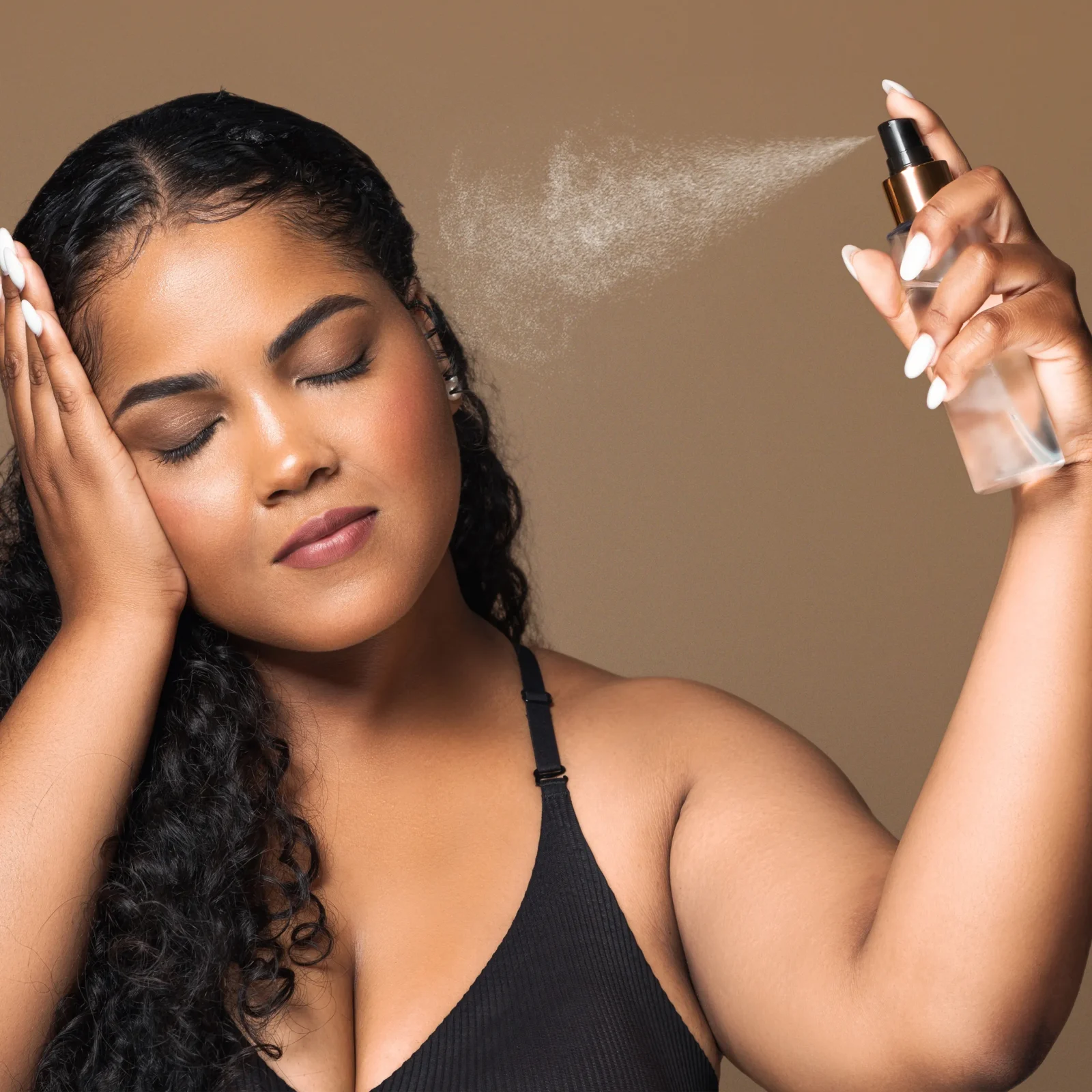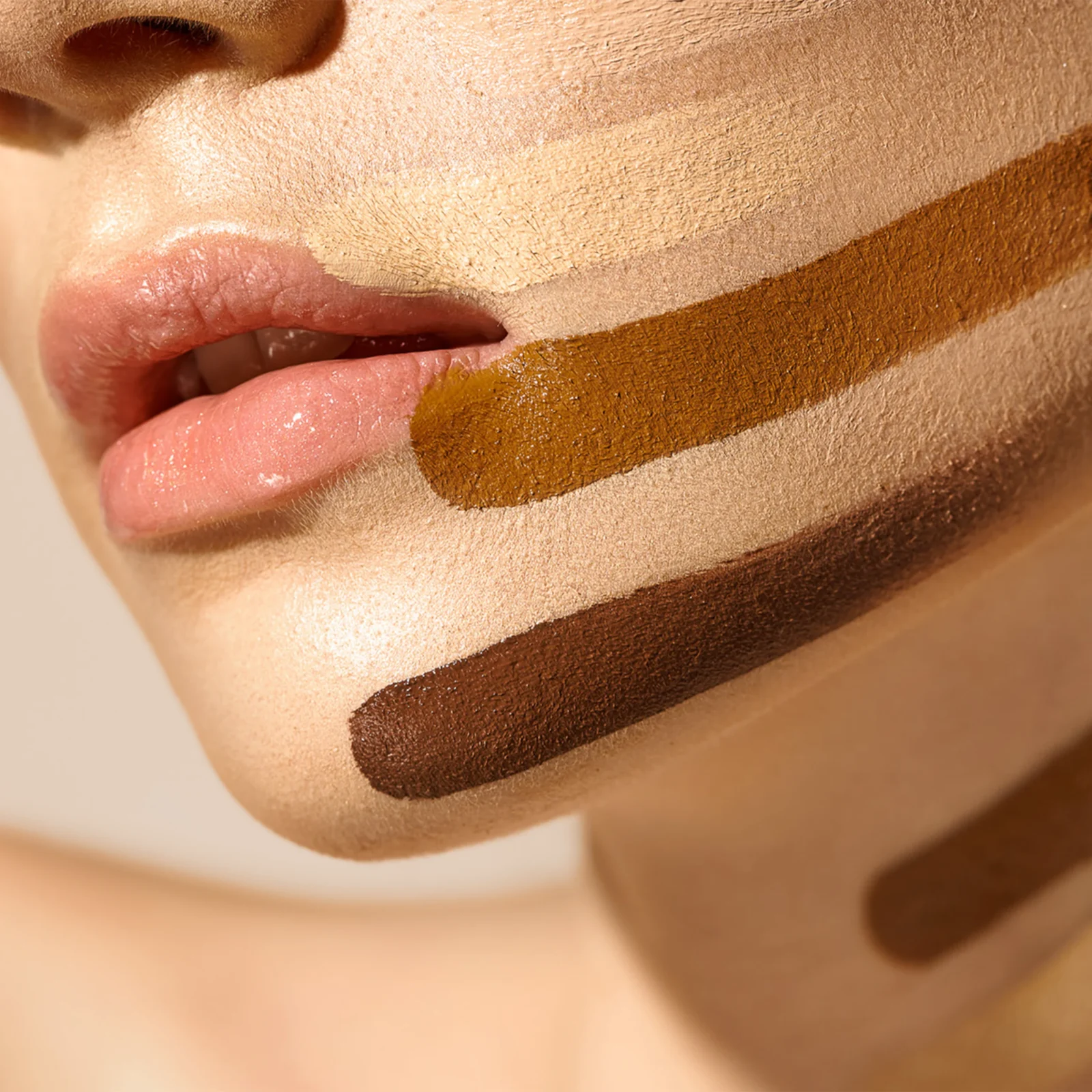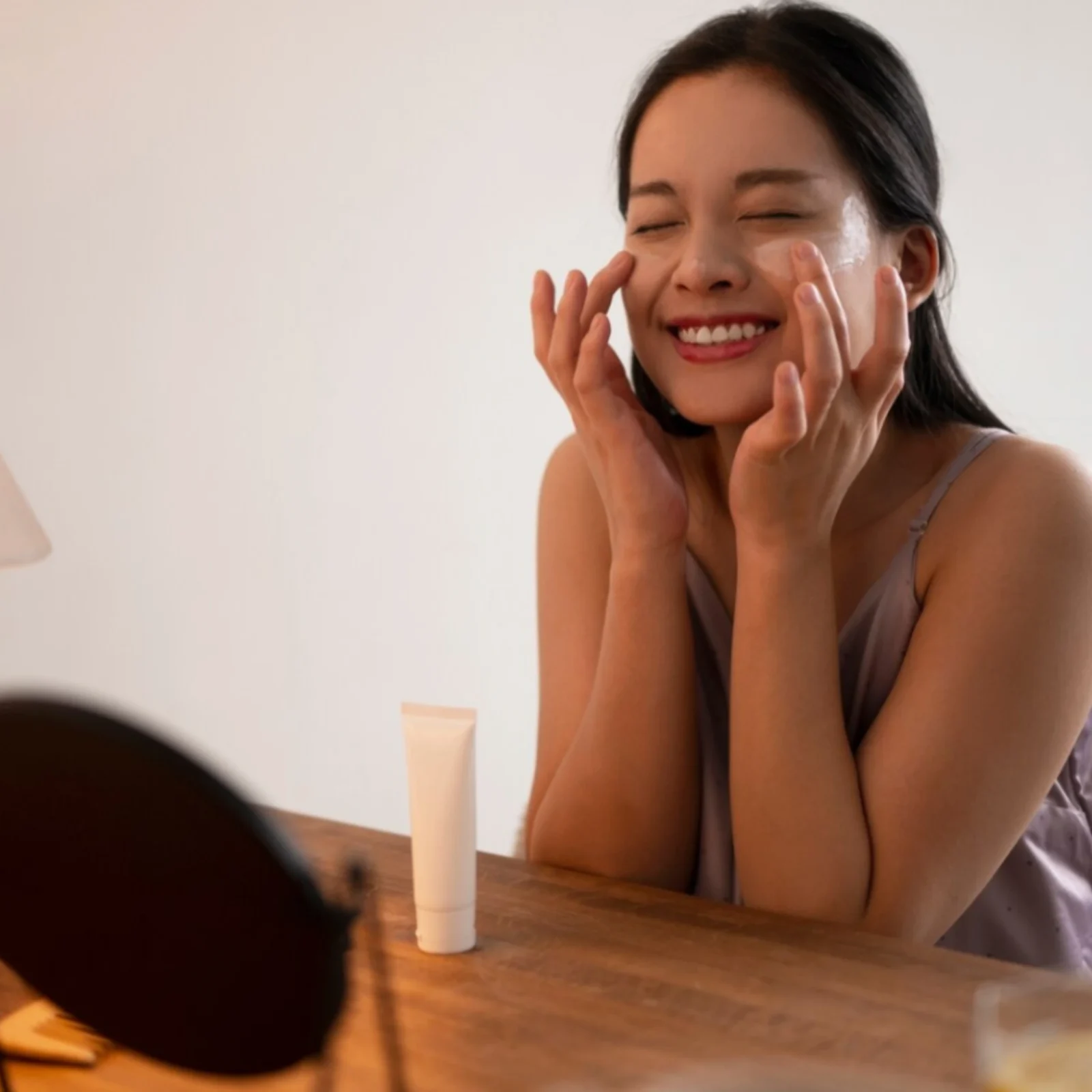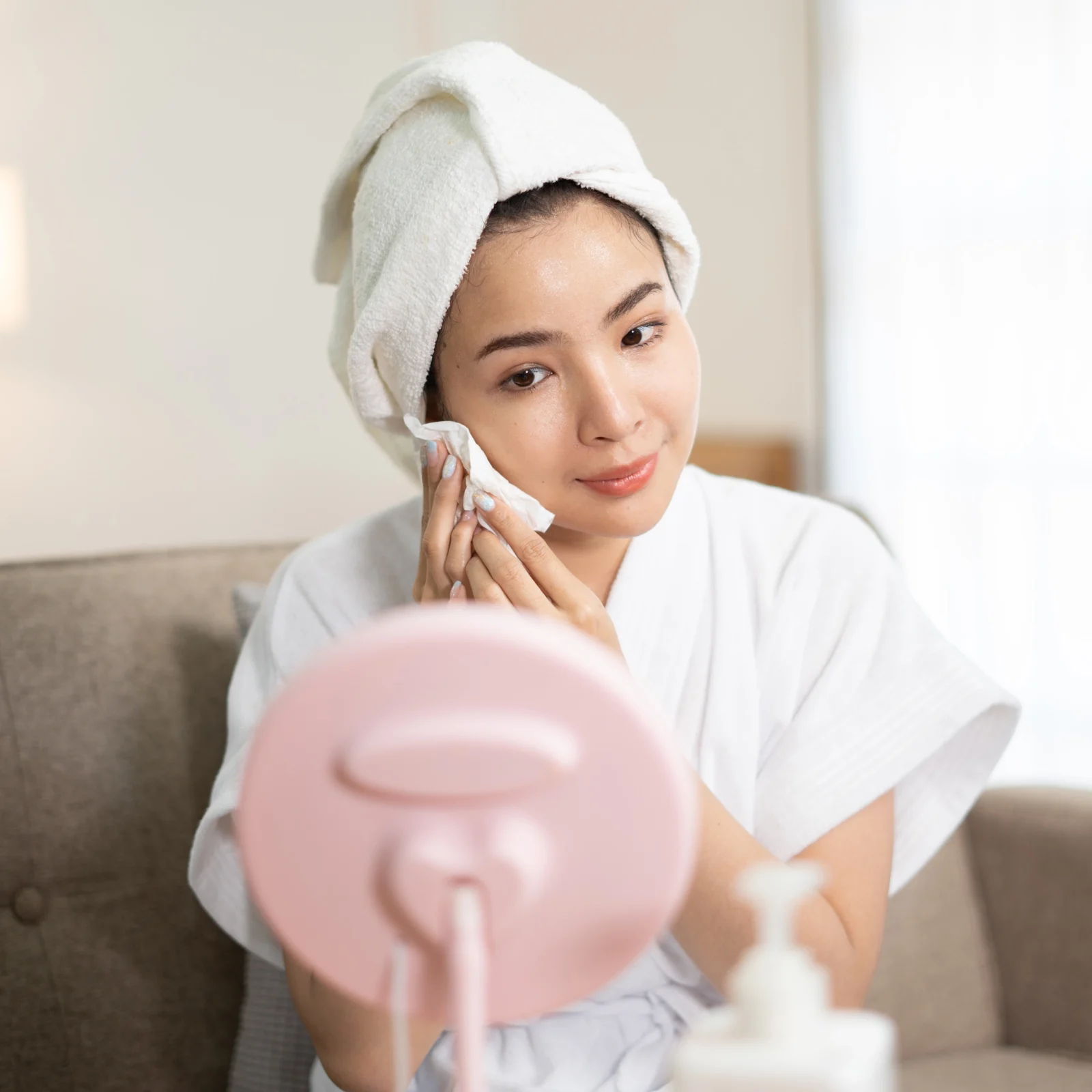A Guide on How to Blur Textured Skin With Makeup
Flawless skin is a myth, but a smooth, blurred look? Here’s how to achieve it.
By Leira Aquino
Skin texture is normal. Let’s start there. Those flawless, poreless faces you see on television and social media? Most of that perfection comes down to lighting, filters, and editing. In reality, everyone has pores and imperfections. While makeup can help blur these features, it doesn’t erase them entirely, says Manila-based celebrity makeup artist Jigs Mayuga. “Makeup cannot correct the texture,” he explains. “You can blur it, but there’s no way to actually correct it.”
So, how do you strike the balance between embracing your natural skin and using makeup to enhance it? Here’s what you need to know, from understanding when texture is normal to applying the right products and techniques for a smoother-looking finish.
What’s normal and what needs dermatological attention?
Before diving into makeup techniques, it’s important to recognize what counts as normal skin texture and what might require dermatological intervention.
Dermatologist Kaycee Reyes, MD, preventive medicine physician and founder of Luminisce Holistic Skin and Laser Medical Aesthetic in BGC says, “Skin naturally has texture due to pores, hair follicles, and oil production.” Minor variations like small pores or slight roughness are part of healthy skin and can be managed with gentle exfoliation—using ingredients such as AHAs or BHAs—and proper hydration. “These improve skin turnover and reduce dead skin buildup without stripping the skin barrier,” she adds.
But when does texture go beyond the norm? According to Dr. Reyes, enlarged pores, persistent roughness, and certain types of scarring may require professional treatments.
- Enlarged pores can result from excessive sebum production, loss of elasticity with age, or debris buildup.
- Persistent roughness may stem from photoaging or accumulated skin damage.
- Acne scars, like boxcar, ice pick, and rolling scars, require targeted treatments beyond makeup.
- Advanced skin laxity leads to visible grooves or wrinkles, and can benefit from minimally-invasive procedures that restore firmness and structure.
Ultimately, Dr. Reyes has an important reminder: “Texture is a sign of living skin, and learning to embrace it while addressing specific concerns with appropriate interventions can redefine beauty standards.”
How do you get smoother, blurred-looking skin using makeup?
If you want to minimize the appearance of textured skin, the key isn’t layering on more products: it’s strategic application. Here’s how Mayuga recommends doing it:
Step 1: Prepping the skin

“I do skin care before I start doing makeup,” Mayuga explains. He begins by prepping the skin with toner or a cleansing lotion, followed by a gel moisturizer like the Clinique Moisture Surge for oily skin or a creamier formula such as the Embryolisse Lait Crème Concentré for dry skin. To create a satin finish before applying makeup, he gently presses a clean powder puff onto the skin to absorb excess product. If additional hydration is needed, he recommends applying a serum before moisturizer, depending on the skin’s dryness.
Step 2: Smoothing with primer
Once the skin is prepped, a pore-minimizing primer can create an “optical illusion” of smoother skin. “It blurs the texture,” says Mayuga. While a primer won’t do any actual erasing, it will at least even out the skin, he explains. One of his favorites is the Make Up For Ever Pore Minimizer Step 1 Face Primer, a smoothing base perfect for minimizing the appearance of pores and blurring fine lines. For those with acne-prone skin or avoiding silicones, a good silicone-free primer option that can still give you an airbrushed effect is the Huda Beauty Easy Blur Primer.
Step 3: Applying foundation—minimally
“My hack is to go in with a very light hand,” Mayuga advises. “Some people apply foundation too heavily, thinking it will fill in the texture,” he says. Overloading foundation into textured areas is one of the biggest application mistakes we tend to make. “When we try to ‘spackle’ foundation into the cracks and crevices of acne scars, it actually aggravates it and makes it look even more textured,” Mayuga explains. Instead, lightly press the product onto the skin and blend gently. He likes to use a damp sponge or a foundation brush instead of a stippling brush, which can settle into fine lines and scars.
No need to reapply foundation excessively either—it makes the skin look flat and unnatural. “In local makeup artist terms, we call this ‘minamasilya’ ‘yung foundation,’” he says. Instead, he recommends choosing blurring products that give the illusion of smoothness without heaviness. That means opting for a matte, blurring foundation instead of a dewy or luminous formula. “If [the foundation] is too wet or if there’s a little bit of luminosity in the texture, it will actually highlight the texture of the skin,” Mayuga explains.
For his clients with textured skin, he likes using the Estée Lauder Double Wear, which is very well-known for its buildable and long-lasting coverage.

Step 4: Setting it right
To lock everything in place and further blur imperfections, Mayuga recommends setting textured skin with a puff, but emphasizes using a light hand. He advises, “The clean puff that we used earlier after skin care, I would pat that on my loose powder or my pressed powder, but I would wipe off the excess with a clean tissue or at the back of my hand before I start setting the face with powder.”
Instead of applying a thick layer all at once, he suggests working in “thin layers instead of really dipping into your powder and just going ham on the application.” To finish, he recommends brushing off any excess powder with a fluffy brush for a smoother, more natural look.
A classic option for this step is the cult-favorite Laura Mercier Loose Setting Powder. Just make sure you avoid heavy matte formulas. According to Dr. Reyes, this will settle into pores and scars, accentuating texture instead of minimizing it.

Your skin, but smarter
Makeup can enhance your skin’s appearance, but it won’t erase texture (and that’s completely fine). “It’s essential to normalize skin texture, while acknowledging that dermatological and cosmetic interventions can refine it without erasing it completely,” says Dr. Reyes. By combining proper skincare, strategic product choices, and expert techniques, you can achieve a natural, smoother-looking complexion while embracing the beauty of real skin.
Latest Stories
You might also like
To provide a customized ad experience, we need to know if you are of legal age in your region.
By making a selection, you agree to our Terms & Conditions.







